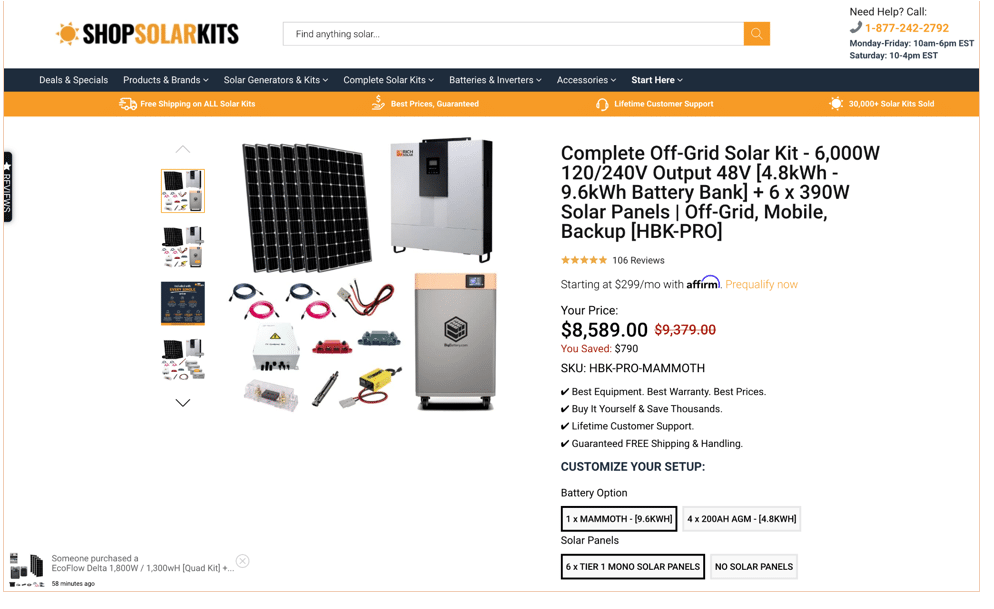The content marketing landscape is full of myths and untruths that many marketers, unfortunately, still believe. When they accept them as gospel and try to hire them, they quickly discover the results they were hoping for are nowhere in sight.
Let’s take a look at the seven most common ones—and what you should be doing instead.

Source: depositphotos.com
Many content marketers and bloggers make the mistake of assuming that once they hit the publish button, their job is done. However, this is when promoting the post comes into play, and the task is not yet done.
as Ahrefs puts it in their blogging for business courseWhen you publish an article, the only thing you can expect is a glimmer of hope: that initial surge of traffic that is received by people who would have seen the new post anyway. These are your regular readers, subscribers and followers.
If you want to attract new audience, you have to promote the post more than once. You must have a clear strategy as to how it will attract people: through internal links, backlinks, social shares, organic traffic, etc.
Take a look at Simple Strategy Jilly Uses to promote your blog posts.

Source: facebook.com/GiliSports
They frequently reference them on social media, not only by linking to them but also by quoting directly from their content or by displaying images they have used. This makes for better click-through rates and better engagement.
#2 All you need for SEO is written content
Keyword optimization is still important for SEO, but adding a few phrases to your written content is no longer enough. While there are many tools, such as SurferSEO or Phrase, that can help you optimize your written content, diversifying your content formats will help you get even better results.
First of all, Google is not the only search engine. In fact, many people use YouTube when they are looking for information, because they enjoy watching or listening to videos.
Short video content is also hugely popular, as are certain types of images. 445 million people Use Pinterest to look for ideas and inspiration, so branching off the written content path is a great content marketing strategy.
look at menlo coaching, They feature a very short video on their homepage that serves multiple purposes. This increases page engagement and lowers its bounce rate.

Source: www.menlocoaching.com
It shows the human side of the brand, making them instantly more relatable. And it diversifies the page’s content, making it more interesting to both search engines and visitors, because there’s more to consume than just text.
#3 Stock photos are fine
Acquiring images for your content is often one of the biggest challenges for content creators. Free stock images aren’t always the best quality, and it can be difficult to find what you’re looking for. Subscribing to a stock photo service is expensive. On the other hand, creating custom images and illustrations is even more expensive.
Although it may be okay to use stock photos for your blog occasionally, you’ll achieve a much better effect if you create even a limited number of custom visuals. They would be:
- Boost your brand identity and make you more recognizable to your audience
- provide another content format through which you can be found, especially through image search
- Always work better with your brand story and content, as it will perfectly suit your needs, vision and personality
smash vc A great example of how a little goes a long way. His signature unicorn is scattered throughout his online presence, and it makes him instantly recognizable. They use it on their blog posts and landing pages, and it tells you everything you need to know about the brand: They have a sense of humor, don’t take themselves too seriously, and own their results. Let me speak for

Source: the break.VC
#4 Describing the product is enough
If you want to drive e-commerce sales, product descriptions alone won’t cut it. While it is certainly true that you need to write clear, concise and enticing descriptions, they should form only part of the content on your product page.
Let’s take a quick look at an example. buy solar kit do an amazing job with their product pages, as demonstrated by this off-grid solar kit page.
- They clearly list the benefits of the product and what makes them better than the competition.
- They explain who the product is for (and who won’t like or need it).
- They provide a comprehensive list of all the included parts along with technical specifications.
- They tell you which panels and batteries are included and also provide a video on each of these two products.
- They provide very detailed product specifications.
- They have an extensive, exceptionally detailed FAQ section.
- And they feature customer reviews!
Since the product is so complex and niche, they have gone the extra mile to tell their customers everything they need to know. Even if you know nothing about solar panels, they offer lifetime customer service and can help you find exactly what you need. All these ingredients work together brilliantly to enhance the value of what would otherwise be a dull page that is likely to flop.

Source: shopolarkits.com
#5 You Don’t Need to Worry About Displaying Customer Stories
Some marketers make the mistake of assuming that customer testimonials make little difference, so they don’t bother to include any on their website.
In fact, testimonials (any kind of social proof to be precise) have immense value and can remove many conversion barriers in one fell swoop.
They will resonate more with your audience because they are perceived as more genuine and honest. Nothing you say about your brand will ever be as influential as what a customer or customer has to say.
sellerplex Works great with a variety of testimonials featured on your homepage. Writing is made more impactful by including the client’s name and company, while video testimonials truly illustrate the brand’s impact on the businesses the clients speak to.

Source: sellerplex.com
If you can, include both types on your website. Video content will make the speaker more relatable and help leads identify with them. Written testimonials are great for people who don’t have the time or interest in watching videos.
#6 Quantity trumps quality
One of the biggest points of contention in the content marketing space is the quantity versus quality debate. What matters more—how many articles do you publish (aka how often do you post) or how well written are your posts?
Without a doubt, we can safely say that quality outweighs quantity every time. Publishing a lot of content will not be as effective as publishing fewer, well-written articles.
Of course, in an ideal world, you would be publishing lots of high-quality content. Since this is not possible without a very large writing team, if the choice is between publishing more often or spending more time on a single article, always choose the latter.
For example, octopost blog Is it not populated? They publish about one quality post per month, while the rest of the blog consists of product updates and podcast summaries.
However, the brand is still a powerhouse in the industry. A lot of their content ranks well, they use the blog to convert traffic, and their posts are really informative. They probably have a small-ish team, but it does an amazing job of creating the kind of content they really need.
#7 Sales and content marketing don’t mix
Finally, some content marketers mistakenly believe that the sole purpose of content is to drive leads. They don’t consider the conversion funnel and want to leave the sales entirely to the sales department.
Yes, most of your content should provide quality information and drive authority, trust and traffic. But if those posts don’t include any sales funnel, you’ll be letting that traffic go to waste.
You don’t need to drive sales through your content. It should remain informative and valuable, but promote yourself whenever it makes sense, and do so in an understated manner.
take a look at Watch and his post on the best time-tracking apps. It’s exceptionally informative, and does a great job of breaking down the pros and cons of each of the apps he mentions. However, they naturally list themselves first and provide an honest review of the benefits of using their solution.
This type of post should never come across as intrusive or sales-y. Your audience will find it when they’re looking for a solution, and they’ll read about you along with your competitors. If you painted a fair picture, some of them would prefer to go elsewhere. But others will try you first, and that’s always the best you can hope for anyway.

Source: Watch. Me
wrapping up
Do you still believe in any of these content marketing myths? Are you applying them in your strategies?
Now that you know what some of the real best practices in the industry are, take your time to incorporate them into the strategy you plan.




